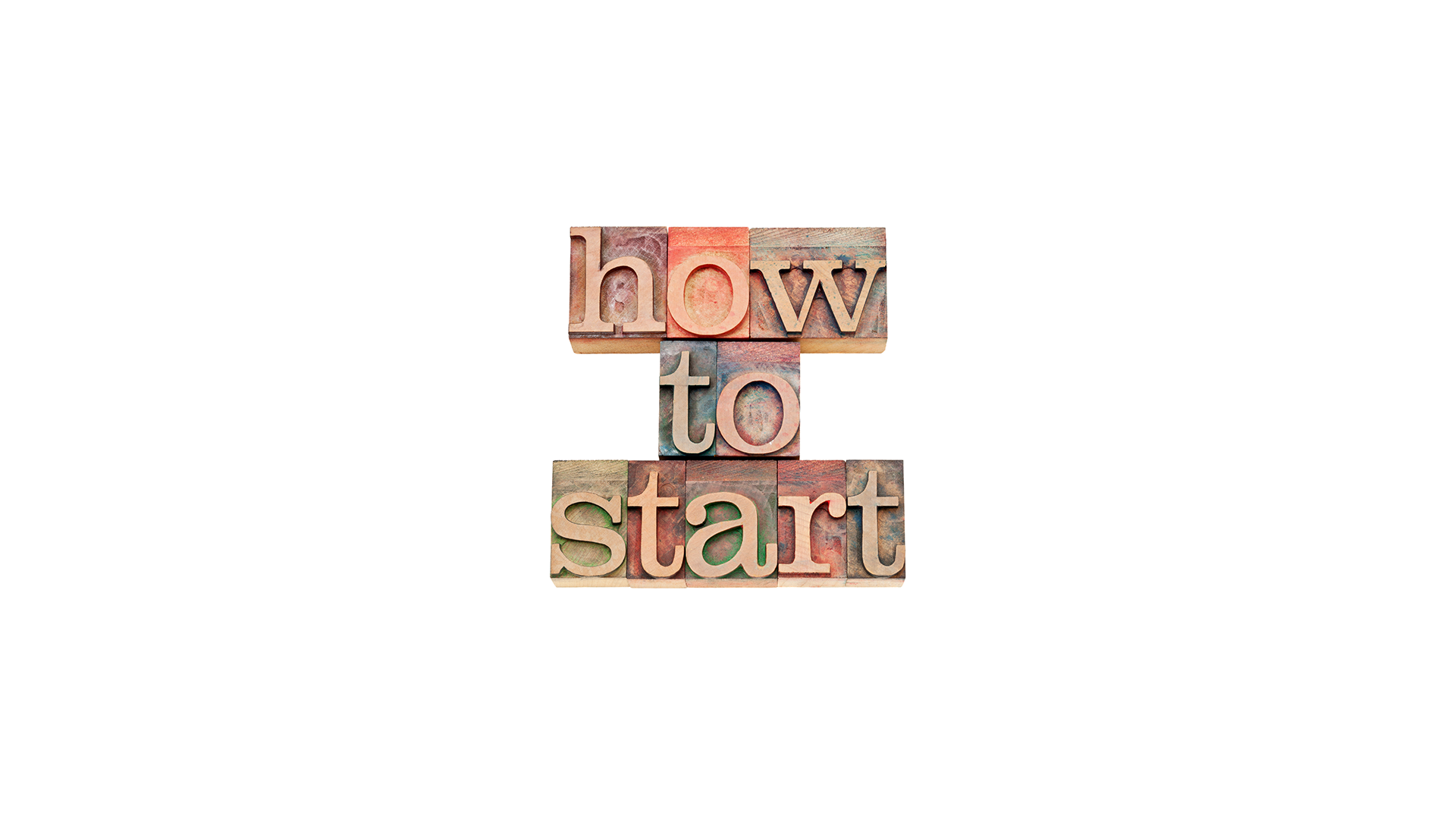Getting Started: Effective Ways to Begin a Meeting
When meetings begin, do you forego the small talk and dive right in, or do you allocate some time to chat before rolling up your sleeves? This article will share tips for setting a positive tone and starting a meeting effectively… with a little help from time-tested agendas and agreements established among team members.
___
There’s no getting around it — it’s impossible to build a great company without meetings. The fact is, meetings are an essential element found in every decent Business Operating System (BOS).
But we’ve all been in meetings where people stroll in a few minutes late and aren’t quite ready to get down to the business at hand. No doubt, we’ve also all shared the experience of seeing everyone arrive on time, begin to make small talk, then lose themselves in this casual exercise as precious minutes of productivity tick away.
Given the number of meetings people have on a weekly basis, it’s imperative that we get those meetings started off on the right foot. With certain norms and agreements, and help from some key tools, starting a meeting in the most effective way is not all that difficult.
It just takes commitment, consistency, and the type of company culture that values the balance of personal interactions and productivity (what we call Getting Smart Stuff Done, or GSSD).
Meeting Prep Is Key to a Good Start
Before we think about the best ways to start a meeting, it’s a good idea to first think about the best practices associated with preparing for any meeting. What’s the goal and purpose of a meeting? What’s the agenda? Once the goal and agenda are clear, who needs to attend, and who’s optional? Determining who's required and who's optional is much easier once the goal and agenda are clear. Who has the information and competencies we need to achieve the goal?
As the answers to those questions of who, how, and what take shape, you may revise the agenda and the meeting’s goal; both are key to informing the attendees of what’s covered in the meeting, their role in it, and how long the meeting should take. Meetings that use the same agenda with a consistent cadence (same day, same time) come together once we’ve had a few meetings under our belts. But for non-recurring meetings, and especially for reactive meetings, this part of the preparation is essential.
To State the Obvious: Start on Time, End on Time
Of course, all that preparation is for nothing if the meeting doesn’t start on time. While starting and ending on time seems like an obvious tip, what’s maybe less obvious are the implications of playing loose with those bookends. Meetings that start late set a poor tone. Worse, we risk losing participants’ attention the longer we delay. Meetings that run too long? Well, that’s when engagement dips.
And if both happen too often, you’re more apt to find an increase in people responding that they’ll “miss the meeting” for one unfortunate reason or another. If the people who opt out of a recurring meeting are mandatory participants, you're wasting the other team members’ time. Obviously, that’s a problem.
A well-structured agenda really makes a difference here. At Ninety, our Weekly Team Meetings include a Segue at the top of our agenda to allow for some personal and professional updates before we get down to business. This not only connects us as human beings but also helps set a collaborative tone since everyone has now contributed before we’re even into the meat of the agenda. The Segue is also a key part of our culture as a fully remote workforce — and it makes a big difference in helping team members truly relate to each other.
Best Practices for Achieving Results and Keeping Meetings on Track
Organizations that hold a fair number of meetings would do well to establish agreements on the appropriate cadence, agenda, and duration of those meetings to help reduce overall meeting strain. As for tactics that lead to great (useful) meetings themselves, here are a few we highly recommend:
- Make sure you're clear on who “owns” the meeting. Assign a facilitator to run the meeting and keep things on track time-wise to ensure maximum productivity and engagement.
- Make sure you have a scribe. This is someone who owns taking notes, creating to-dos, cascading messages, and/or moving an Issue to your long-term issues list. (Best practice is to have different people be the facilitator and the scribe.)
- Stay focused on the agenda. You took the time to create it, so be sure to stick to it.
- Encourage participation and feedback. Meeting leaders should create an environment where people feel comfortable sharing ideas and opinions without fear of judgment or criticism.
- Manage the time effectively. Stay on track and on time by paying attention to the minutes allotted for each agenda item. Pro tip: Our Meetings tool has an in-app timer to assist!
- Address distractions and tangents. We’re human, so tangents happen. But when you have a high-trust team, you’ll find that participants feel empowered to call out a tangent to keep things moving along.
- Identify action items and next steps. During the meeting, participants should work together to identify and agree upon specific goals or tasks and who owns them. The scribe creates and documents these agreements.
- Follow up after the meeting. Great teams honor their agreements. That's why it’s essential we document responsibilities, set deadlines, and have a system for monitoring progress to maintain accountability.
Common Mistakes to Avoid
If you follow the tips for creating and starting a meeting and ensuring it’s productive, then you can probably guess the mistakes that should be avoided since they basically represent the opposite of those tips! But we believe in being thorough, so let’s run through a few ways meetings can become derailed. (And let’s also be sure to avoid them.)
At the top of the list, of course, is a lack of preparation. After all, “Be prepared” is an old adage for a very good reason. If the leader of the meeting isn’t prepared, then nobody else will be properly prepared to engage or add much in the way of productive conversations and outcomes.
So what, specifically, does poor preparation look like? Here are a few examples:
- Lack of an agenda with specific times allocated to each segment
- Poor time management
- Disorganization and lack of structure
- Failure to create engagement
- Allowing one participant to dominate the conversation
These last two are key factors that are often overlooked. Healthy conversation and debate lead to the sharing of ideas and perspectives that guide a team to smart decisions. Achieving a high level of engagement and collaboration, however, can be compromised by someone who — intentionally or inadvertently — dominates the conversation. Keep an eye and ear out for this. Respect that there are different communication styles in the room and different levels of comfort in speaking up. Leave room for all voices to be heard and all opinions considered. Encourage post-meeting follow-ups if time is running short and more exploration is warranted.
Meetings are designed for actionable outcomes, and they’re a key part of an organization’s Business Operating System (BOS). If your BOS is underdeveloped or underutilized, it might be time to explore something more robust. The Ninety platform has a full suite of company-building tools that will help your organization focus, align, and thrive. Our Meetings tool is a huge part of it.
Because when we get everyone’s best in the meetings we hold, we get to realize great things as an organization.
It’s Time to Make the Most of Your Meetings
Are you ready to fine-tune your meetings, improve productivity, and create a more positive meeting culture?
Fortunately, there’s a way to manage and optimize your meeting length based on the type of meetings and desired outcomes. Ninety’s Meetings tool lets you automate and keep your meetings on track for maximum productivity and engagement.
Manage your meeting time for success. Start your first meeting for free in Ninety today.
Ninety is an innovative, cloud-based platform built for remote, hybrid, and in-person teams that want to work smarter and more effectively – together.







